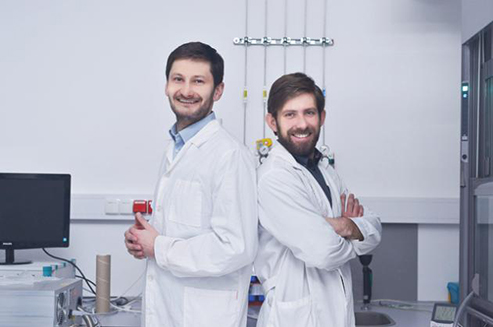The Polish researchers envision the creation of a new Transparent Conductive Film (TCF), which can be widely used in electronics, especially in the production of liquid-crystal displays, thin-film solar cells and touchscreens. The new technology enables cheaper production and more efficient products; it also makes it possible to apply the films on flexible foil.
Today, cells and displays widely use the element indium in the form of indium tin oxide (ITO), which is used as a so-called transparent electrode. Unfortunately, due to its crystalline structure, ITO loses its properties when bent. This makes it impossible to use in modern flexible products that meet the requirements of the market and customers. In addition, the price of indium is high and variable, and global resources are largely controlled by one country – China. Our invention will replace indium. The introduction of a new generation of conductive layers, on which we are working, will allow global manufacturers to become independent of the uncertain indium market. In other words, our technology will be cheaper, more efficient and more convenient, and it will benefit users, who will get brighter displays with ever larger screen sizes and more efficient photovoltaic panels. – Filip Granek, PhD
A team of researchers and developers is working on the invention, and it includes two world-renowned Polish scientists who have been recognized by Polish and international institutions and published and published in prominent journals, including Nature.. Together they have become interested in the global problem affecting the majority of the population and have begun developing hard technology in nanotechnology, which is still rare in Poland.
From the idea’s beginning, work on the technology has been carried out as part of the company XTPL, which was established in June 2015. The originators also started to work for the company, having resigned from foreign contracts and jobs in scientific institutions in order to devote their time and energy to developing the technology. The intense research and development led to the achievement of the first milestone: being able to control the printing process of conductive pathways that are tens of times smaller than those currently available on the market. The process has been confirmed in laboratory conditions.
We have developed a method by which we have produced metallic conductive lines in a technological process that can be scaled and industrialized. The process itself is very innovative, due to its interdisciplinary nature, and includes the areas of nanotechnology, solid-state physics, inorganic chemistry, materials science and electronics. The work involves many people with a broad spectrum of competence, and we consider this one of our greatest successes. Until now we have obtained conductive lines from 1 to 5 micrometers. Further work and optimization of the process will lead to a reduction in the width of these lines down to less than 1 micrometer, so this technology will get into a very attractive nanometer range for many applications. For comparison, standard nanomaterial printing techniques, such as screen or digital printing, can produce conductive lines with widths in the range of 50–100 micrometers. – Filip Granek
The new method marks a breakthrough in the production of electronic devices.
We can imagine a simultaneous reduction in the cost of solar cells and increase intheir efficiency, which will allow their further massification. This means that there will be more and more solar panels on roofs in Poland and around the world. At the same time, consumers of audio/video electronics will get trouble-free images that scale for growing screen sizes. – Zbigniew Rozynek, PhD
The first stage of R&D has allowed the scientists to positively verify the difficult technological concept. Now it is time for the industrialization of this technology. The company has also initiated the patent process.
In time, we will sell licenses for the patented technology, but today we are focusing on research and raising capital for commercialization. The research we have carried out so far shows that we are dealing with a breakthrough technology. Its further development requires financial outlays, as is usually the case. We have just started to raise capital in the second round of funding. – Zbigniew Rozynek
XTPL is currently looking to collaborate with other scientists, such as physicists, chemists and electronic engineers. The recruitment process will take several months.
Source: XTPL press release
Photo © XTPL – from the left: Filip Granek, Zbyszek Rozynek


